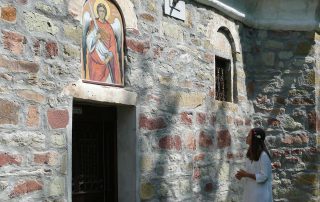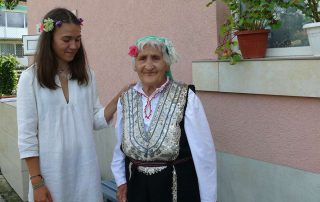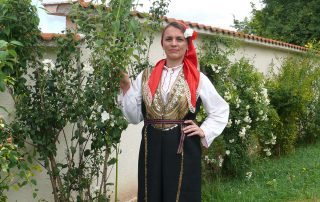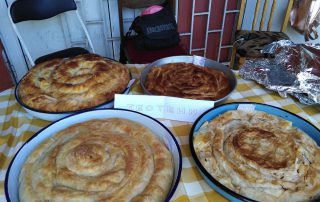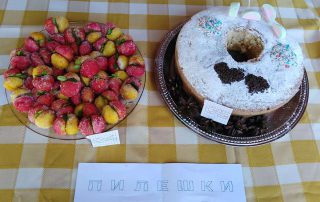MESHTITSA
Meshtitsa is a good place for ornithologists and bird watchers.
Natura 2000 is a network of core breeding and resting sites for rare and threatened species, and some rare natural habitat types which are protected in their own right. It stretches across all 27 EU countries, both on land and at sea. The aim of the network is to ensure the long-term survival of Europe’s most valuable and threatened species and habitats, listed under both the Birds Directive and the Habitats Directive.
The protected area “Meshtitsa” is part of this European network and falls into the territory between the villages of Raduy, Babitsa and Sopitsa in Pernik district and Zlatitsa in Sofia distric, where the white stork and red-backed shrike nest. That is why the meadows and pastures are under protection. Here you can also come across the crex crex, which is in the Bulgarian red book.
In order to protect the homes of these birds, the local bee-keepers also have their valuable contribution with more than 20 apiaries. They often have children and their parents and organise demonstrations in their bee-gardens. We are honoured to have a published Bee-keeping Practical Guide Book by one of the members of the bee-keepers association – eng. Georgi Rusimov.
Pre-historic artefacts
When you go out of the village and take the road to the dam, in the very outskirts is the area of Tatómir, right between the Ralevska river and the Krivopadinska river. In the mid 1980s local people came across prehistoric artefacts and in1988 experts from the Regional Museum of History in Pernik dated them as of 5-6 thousand years BC.
The finds included parts of different pots, idols and tools and now are kept in the Pernik Museum.
The legend about Krali Marko’s stone
In the end of the village of Meshtitsa, right on the highest point, called Meló (the rock area) there was a stone, quite different from the local stones, with a square form and 3 pits in the form of 3 giant fingers holding it – this is Markov kamik (Krali Marko’s stone). It protects the village from evil and brings health and wealth to its people. About 15 years ago a group of men took it and threw it in the river to prove it is just a stone. But in 2012 a major earthquake shook the area exactly in Meshtitsa, caused a lot of damage and changed the underground water flows. Now we are planning to take the stone back to the top of the hill – Meló with a special ceremony. So here is the legend that the old grandmas in the village tell their grandchildren.
One day Krali Marko was riding through the forest. The forest was very sad and Marko asked it why it was so. The forest told him that the day before the Turks passed through and they had three chains with with slaved people. Marko got very angry. He jumped onto the back of his horse Sharkolia and raced through the forest to catch up the group. Soon he saw them and kindly asked the black arab to free the slaves. As the arab refused to do it, Marko became furious and took an enormous stone from the ground. He threw it so high that it flew over 9 mountains and 9 villages and fell on the hill above our village of Meshtitsa. The arab got scared and let the slaves go. From that day on the stone protects our village and people.
Folklore costumes show and culinary contest
On 12 July each year is the day of the village which we call Sobóro. In the village all people have their relatives from other place and celebrate their reunion. In the village center there are various cultural attractions with music and songs. But the most interesting of them are the traditional costumes defile and the culinary contest Petrovsko pile (Peter’s chicken). All participants must be from the village. There is a special section for old and traditional recipes. After the jury has announced the awarded participants, there is an exhibition where visitors can try the meals and support the jury’s decision. The official programme finishes with a joint traditional horos where everybody dances.
The church of Saint Peter and Paul
The church in Meshitsa is 140 years old with authentic frescоs and old icons. It was fully renovated after the damages by the earthquake in 2012. It is named after the two saints Peter and Paul. Each Saturday it is open for the local people and during the major holy celebration it is full with young and old men, women and children. The tradition to bring freshly baked bread or cakes to the church for health is still alive.




